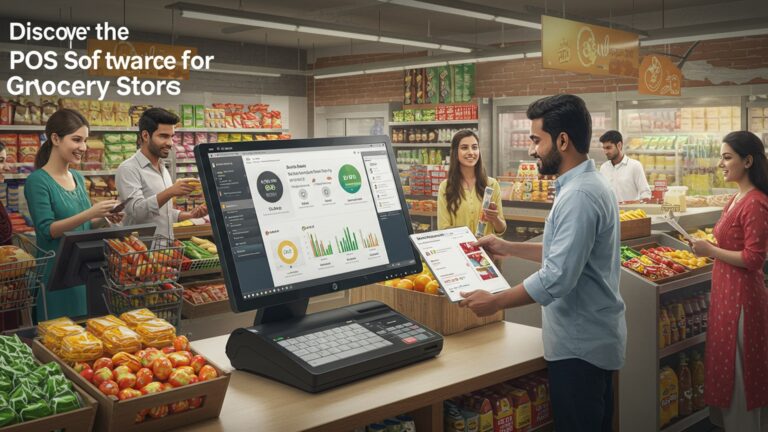Discover 10 Key Benefits of an Effective Clothing Inventory Management System
In today’s hyper-competitive fashion retail landscape, a poorly managed clothing inventory isn’t just a nuisance; it’s a direct threat to profitability and brand reputation. With the rapid cycles of fast fashion, the complexities of omnichannel sales. the ever-present challenge of reverse logistics from e-commerce returns, businesses are drowning in data and losing revenue to stockouts or overstock. Modern consumers demand instant availability and accurate sizing, making antiquated spreadsheets or fragmented systems obsolete. An effective clothing inventory management system transcends simple tracking; it’s the strategic backbone enabling real-time visibility, predictive analytics. seamless operational flow, transforming potential losses into significant gains and ensuring businesses stay agile in a volatile market.

Understanding the Essence of Clothing Inventory Management Systems
An effective clothing inventory management system is far more than just a digital spreadsheet; it’s the backbone of any successful apparel business, from small boutiques to large e-commerce giants. At its core, a clothing inventory management system is a sophisticated software solution designed to track, organize. manage all aspects of a clothing retailer’s stock. This includes everything from raw materials (if manufacturing) to finished goods, across multiple locations, sales channels. warehouses. It provides real-time visibility into stock levels, sales data, returns. incoming shipments, enabling businesses to make informed decisions and operate with maximum efficiency. Without such a system, businesses often grapple with issues like stockouts, overstocking. operational bottlenecks that directly impact profitability and customer satisfaction.
1. Reducing Overstocking and Understocking
One of the most immediate and impactful benefits of a robust clothing inventory management system is its ability to optimize stock levels. Overstocking ties up valuable capital in unsold inventory, leading to reduced cash flow, increased storage costs. the risk of markdowns on out-of-season or slow-moving items. Conversely, understocking results in lost sales opportunities and frustrated customers who can’t find the items they want. A sophisticated clothing inventory management system uses historical sales data, current trends. predictive analytics to forecast demand accurately.
- Real-world Application
- Actionable Takeaway
Imagine a fashion retailer preparing for the summer season. Without a system, they might order too many heavy sweaters or not enough light dresses. A CIMS, But, analyzes last year’s summer sales, current fashion trends. even external factors like weather forecasts, suggesting optimal quantities for each SKU (Stock Keeping Unit). This precision ensures shelves are stocked with what customers want, when they want it, minimizing waste and maximizing sales.
Look for a clothing inventory management system that offers advanced forecasting tools and integrates with sales data from all your channels to prevent both excess inventory and missed sales.
2. Enhancing Cash Flow and Profitability
By preventing overstocking and reducing the need for deep discounts, a clothing inventory management system directly improves a business’s cash flow. Capital that would otherwise be tied up in stagnant inventory can be reallocated to marketing, new product development, or other growth initiatives. Moreover, by optimizing purchasing, businesses can often negotiate better terms with suppliers due to more predictable and larger orders for popular items, or smaller, more frequent orders for niche products.
- Example
- Actionable Takeaway
A small boutique owner used to order new collections based on gut feeling. After implementing a clothing inventory management system, they discovered that certain sizes and colors consistently sold out faster. By adjusting their reorder points and quantities based on this data, they reduced their average inventory holding costs by 15% and saw a 10% increase in profit margins over two quarters.
Utilize the inventory turnover reports generated by your system to identify slow-moving items and implement strategies to clear them, freeing up cash.
3. Boosting Customer Satisfaction and Loyalty
When customers can reliably find the clothing items they desire, in the right size and color, their shopping experience is significantly enhanced. A reliable clothing inventory management system ensures accurate stock data, whether online or in-store, preventing the disappointment of an item being “available” online but out of stock when the customer attempts to purchase or pick it up.
- Scenario
- Actionable Takeaway
A customer visits an online store, finds a dress they love. sees it’s in stock. They purchase it confidently. If the system were inaccurate and the item wasn’t actually available, the subsequent cancellation or delay would lead to frustration and potentially a lost customer. An effective clothing inventory management system prevents such scenarios, building trust and encouraging repeat business.
Ensure your chosen clothing inventory management system offers real-time inventory updates across all sales channels, providing customers with accurate availability details at every touchpoint.
4. Streamlining Operations and Efficiency
Manual inventory processes are notoriously time-consuming and prone to human error. A clothing inventory management system automates many routine tasks, such as tracking incoming shipments, updating stock levels after sales. generating purchase orders. This automation frees up staff to focus on more value-added activities like customer service or merchandising.
- Process Improvement
- Actionable Takeaway
Instead of physically counting every item during a stocktake, a system with barcode scanning capabilities can update inventory counts rapidly and accurately. For instance, when a new shipment arrives, scanning a master carton’s barcode can automatically add all contained items to the inventory, saving hours of manual entry.
Prioritize a clothing inventory management system that offers automation features for repetitive tasks like stock receiving, order fulfillment. reordering, thereby improving overall operational efficiency.
5. Enabling Data-Driven Decision Making
A comprehensive clothing inventory management system collects a wealth of data on sales trends, product performance, customer preferences. supplier reliability. This data is invaluable for making strategic business decisions, from identifying best-selling styles and sizes to optimizing pricing strategies and planning future collections.
- Strategic Planning
- Actionable Takeaway
By analyzing reports from their clothing inventory management system, a fashion brand might discover that eco-friendly fabrics are increasingly popular among their target demographic. This insight can then guide their sourcing and design decisions for upcoming seasons, aligning their product offerings with market demand.
Regularly review the analytics and reporting features of your clothing inventory management system. Use insights on sales velocity, product popularity. customer demographics to inform purchasing, marketing. design decisions.
6. Reducing Manual Errors and Discrepancies
Manual data entry is a common source of errors in inventory management, leading to stock discrepancies, incorrect orders. financial losses. A clothing inventory management system minimizes these errors through automation, barcode scanning. integrated data flows between different business functions.
- Error Prevention
- Actionable Takeaway
Imagine a busy retail associate manually entering sales data. A simple typo could throw off inventory counts for multiple items. With an integrated POS (Point of Sale) and clothing inventory management system, each sale automatically deducts the item from inventory, eliminating manual intervention and the associated errors.
Implement a system that integrates seamlessly with your POS and other business tools to reduce manual data entry points and improve data accuracy across your entire operation.
7. Optimizing Storage Space Utilization
Effective inventory management isn’t just about what you have. where you keep it. A clothing inventory management system can help optimize warehouse and store floor space by providing insights into product movement and recommending optimal storage locations. This is particularly crucial for clothing, which comes in various sizes and often requires specific storage conditions.
- Warehouse Efficiency
- Actionable Takeaway
A large apparel distributor might use their clothing inventory management system to identify slow-moving items that can be stored in less accessible, lower-cost areas, while fast-moving items are placed in easily reachable locations for quicker picking and packing. This intelligent placement can significantly reduce picking times and improve overall warehouse throughput.
Utilize the location tracking features within your clothing inventory management system to organize your physical inventory logically, maximizing space and minimizing retrieval times.
8. Accelerating Order Fulfillment and Shipping
For e-commerce clothing businesses, fast and accurate order fulfillment is paramount. A sophisticated clothing inventory management system integrates with shipping carriers and e-commerce platforms, automating the order processing workflow from sale to shipment. This ensures orders are picked, packed. dispatched quickly and correctly.
- E-commerce Advantage
- Actionable Takeaway
When a customer places an order online, the clothing inventory management system can immediately identify the exact location of the item in the warehouse, generate a pick list. even print a shipping label. This streamlined process allows for same-day shipping, a significant competitive advantage in the fast-paced world of online retail.
Choose a clothing inventory management system that offers robust integrations with popular e-commerce platforms and shipping solutions to automate and accelerate your order fulfillment process.
9. Facilitating Scalability and Growth
As a clothing business grows, managing inventory manually becomes unsustainable. A robust clothing inventory management system is designed to scale with your business, handling increased sales volumes, more complex product lines. additional sales channels or physical locations without a proportional increase in administrative overhead.
- Growth Enablement
- Actionable Takeaway
A startup clothing brand might begin with a single online store. As they expand to include wholesale accounts, pop-up shops. eventually brick-and-mortar locations, their clothing inventory management system can centralize all inventory data, providing a unified view of stock across diverse channels and locations, making growth manageable rather than chaotic.
When selecting a clothing inventory management system, consider its scalability. Can it handle multiple warehouses, international shipping. a growing SKU count without requiring a complete system overhaul?
10. Improving Loss Prevention and Security
Inventory shrinkage due to theft, damage, or administrative errors is a significant concern for clothing retailers. A detailed clothing inventory management system provides comprehensive tracking capabilities, allowing businesses to pinpoint exactly where discrepancies occur. This level of visibility acts as a deterrent and helps identify areas for improved security measures.
- Accountability and Audit Trails
- Actionable Takeaway
If a specific item consistently goes missing or is damaged, the system’s audit trail can show who last handled it, where it was stored, or when it was last scanned. This data is invaluable for investigating losses and implementing preventative measures, such as enhanced security cameras in certain areas or additional staff training.
Regularly reconcile your physical inventory with the data in your clothing inventory management system. Use the system’s reporting features to identify patterns of shrinkage and implement targeted loss prevention strategies.
Conclusion
Ultimately, embracing an effective clothing inventory management system isn’t merely about counting garments; it’s a strategic move that directly impacts your bottom line and customer loyalty. Take the initiative now to assess your current processes and identify where a robust system can bridge critical gaps, transforming potential chaos into streamlined efficiency. From my own retail days, I’ve seen firsthand how a single mismanaged SKU can snowball into lost sales and frustrated customers – imagine telling a shopper you’re out of stock on a trending item like sustainable denim when it’s just ‘misplaced’ in the back. Modern retail, with its rapid shifts and e-commerce demands, absolutely requires this foresight to stay competitive and relevant. Don’t let outdated methods hold you back. Invest in a system that offers real-time insights, allowing you to optimize stock levels and even predict future trends, much like leveraging advanced POS software does for overall business operations. Your inventory is an asset; manage it intelligently. watch your clothing business thrive in a competitive market.
More Articles
Discover 5 Key Benefits of Barcode Scanners for Clothing POS
How to Select the Best POS Software Guide for Business Efficiency
Top 10 Benefits of POS Software for Clothing Stores in India
How to Optimize Inventory Management POS India for Profit Growth
How to Select the Best Billing and POS Software for Your Business
FAQs
Why should a clothing business even bother with inventory management?
An effective system helps you avoid common headaches like running out of popular items or having too much unsold stock. It’s all about making sure you have the right clothes at the right time, which keeps customers happy and boosts your bottom line.
How does this system help prevent those annoying ‘out of stock’ situations?
By giving you real-time visibility into your inventory, the system alerts you when stock levels are low for specific items. This means you can reorder proactively, ensuring popular sizes and styles are always available for your customers.
Can it really reduce wasted clothing or items that just don’t sell?
Absolutely! It helps you identify slow-moving items and overstocked products, allowing you to run targeted promotions, move inventory, or adjust future purchasing. This minimizes dead stock and reduces losses from markdowns or unsold goods.
Will an inventory system actually make my team’s life easier?
Definitely. It automates many tedious tasks like tracking stock, counting items. generating reports. This frees up your staff to focus on selling and customer service, making your operations much smoother and more efficient.
What’s the biggest benefit for my customers?
Your customers get a much better shopping experience. They’ll find what they’re looking for more often, receive accurate insights about product availability. generally have a smoother interaction with your brand, leading to higher satisfaction and loyalty.
How does it help me make smarter business decisions?
It provides valuable data and insights into sales trends, popular items, peak seasons. customer preferences. With this insights, you can make informed decisions about purchasing, merchandising. marketing strategies, optimizing your entire business.
I sell online and in-store. Can this system handle both?
Yes, a good clothing inventory management system is crucial for multi-channel businesses. It syncs inventory across all your sales points – physical stores, e-commerce websites. even pop-ups – ensuring accurate stock levels no matter where a customer shops.





